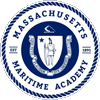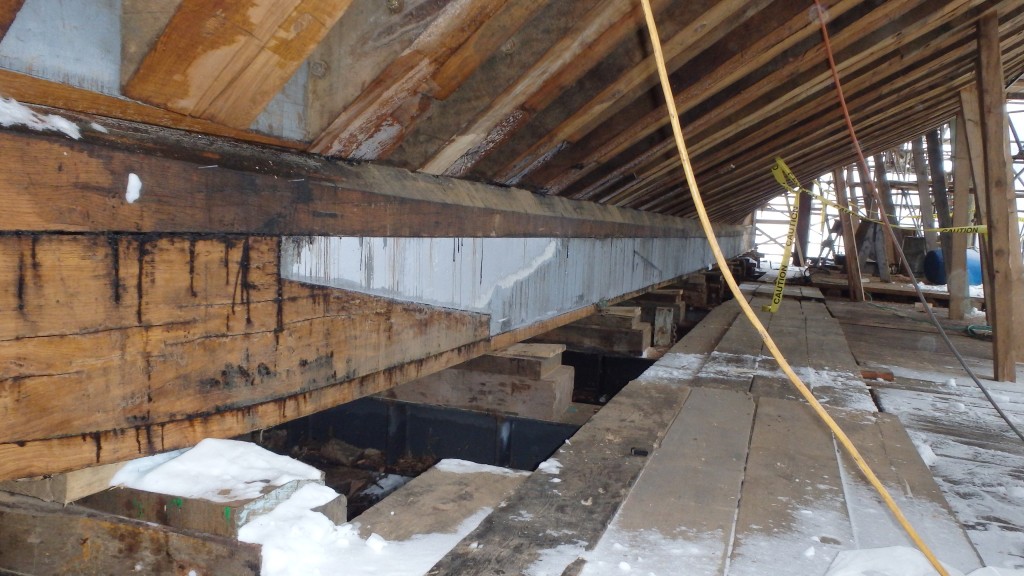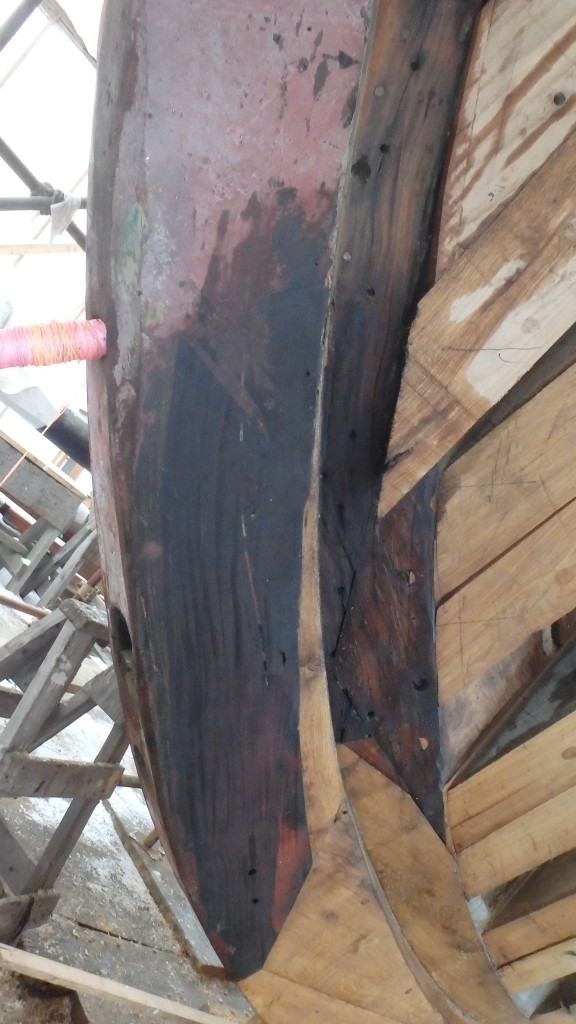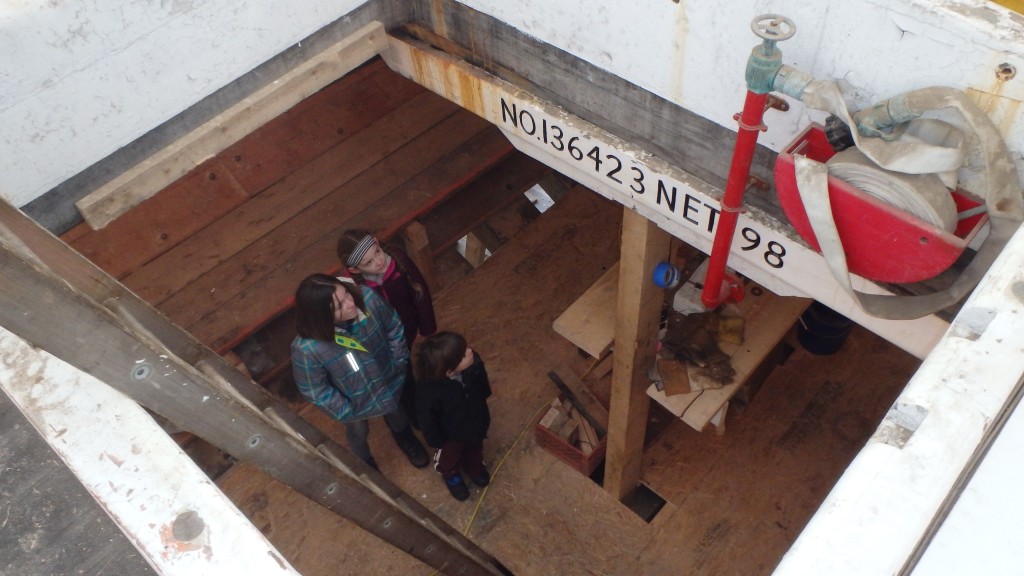New Year in the Shipyard
There is more than the work on Ernestina-Morrissey that is new in Boothbay Harbor as 2018 begins. Andy Tyska, president of Rhode Island-based Bristol Marine, has announced the acquisition of Boothbay Harbor Shipyard, now called “The Shipyard in Boothbay Harbor”. Tyska said “… I know that Eric (Graves, vice-president) together with the yard’s talented shipwrights and skilled workers, will build on … past success and effect improvements ….”
Bristol Marine has posted a great video on their Facebook Page taken about a month after the photos below. You can see many more stanchions are in.
SEMA director Captain Willi Bank visited the yard in early January and sent along these photos that show the sheer restored and other details and progress of the Phase 1 work.
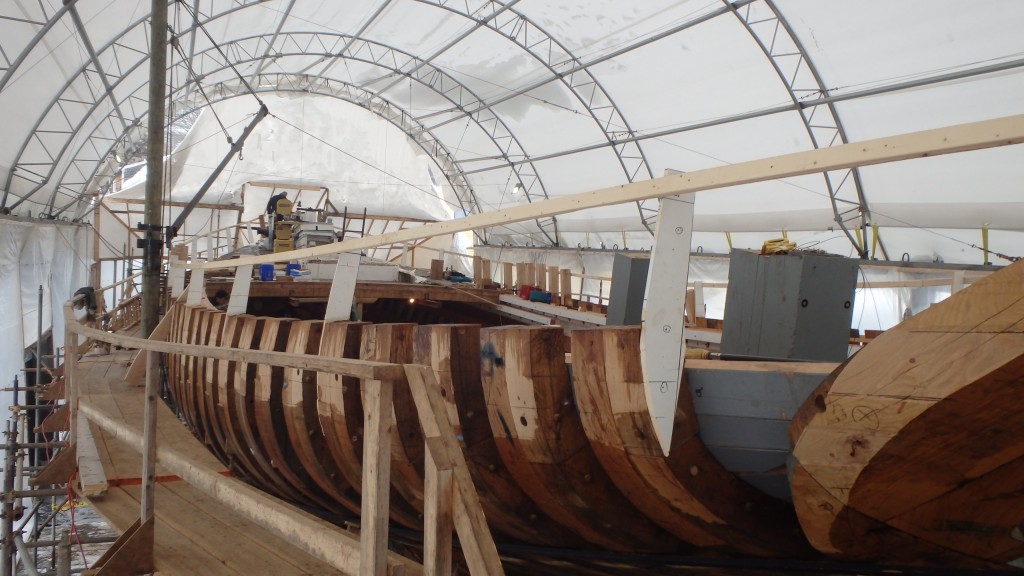
From the port quarter looking toward the bow you can see Ernestina-Morrissey will have her historic sheer back.
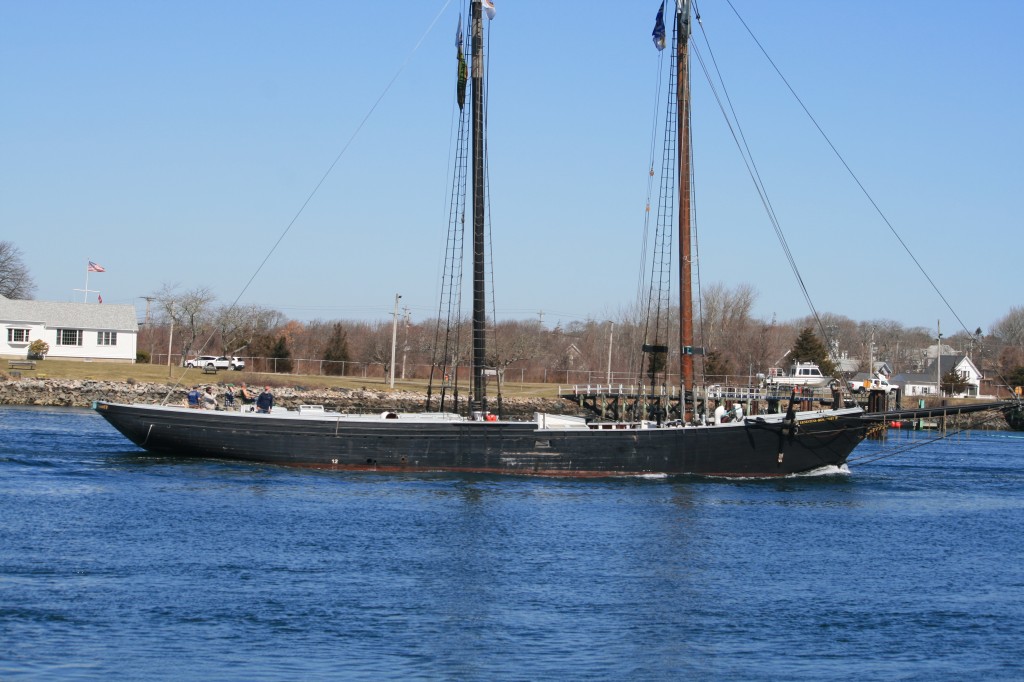
Sheer (line) is a term to describe the curve upward toward the bow and stern of a vessel's main deck. You can see in this photo of Ernestina-Morrissey in the Canal on the way to BHS in April 2015 how flat the line of her stern is. With the reconstructed stern, the boat will again have the traditional sheer of an 1894 Essex schooner.
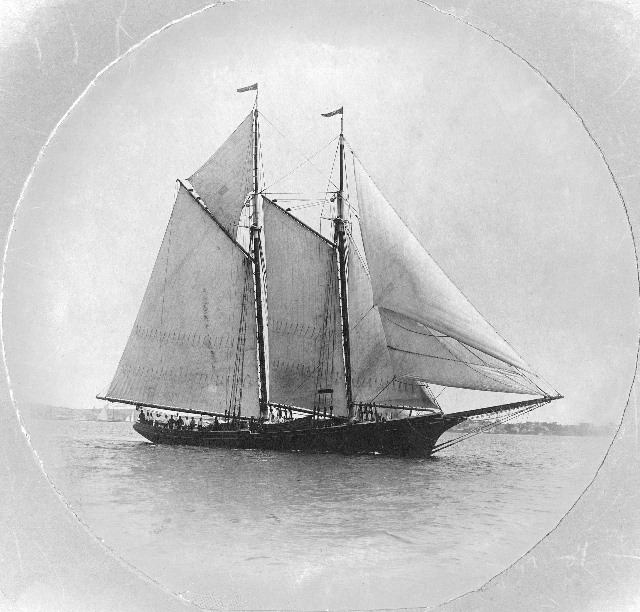
Here's what Effie M. Morrissey looked like just before she headed out for her first trip to the Banks, 6 weeks after she was launched. You can compare this with the photo above. The bow's sheer was restored during the 2008-09 work.
You can see the condition of her stern when they started work in 2015 here.
On the far right of the first photo above you can see some of the transom framing. The next photo is from the starboard side of the transom looking forward.
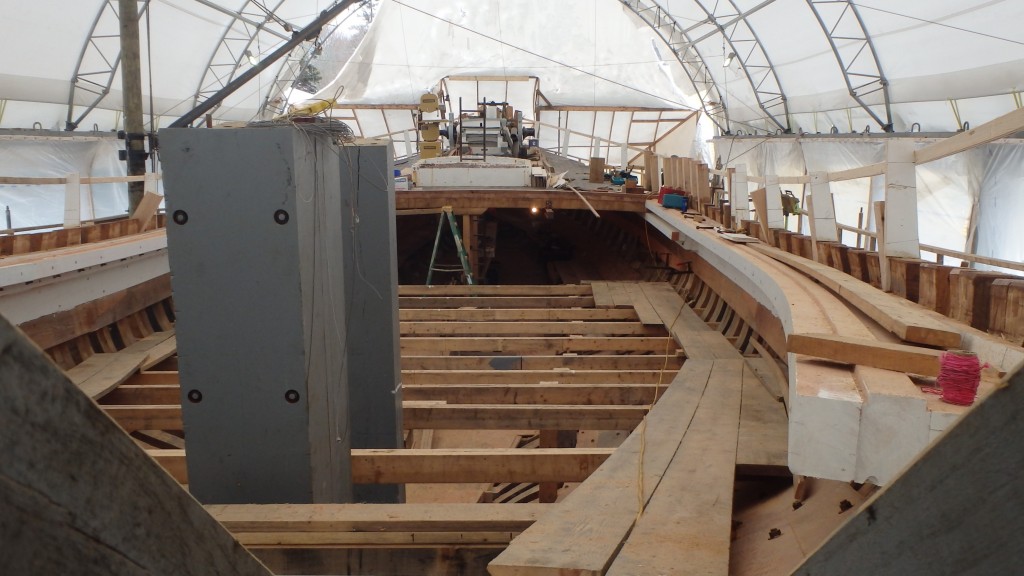
The gray vertical timbers on the center-left are the rudder and stern post. Running along the inside of the frames from the transom forward is the sheer shelf installed above the sheer clamp on the port and starboard sides.
The foredeck provides a different view of the sheer clamps looking aft.
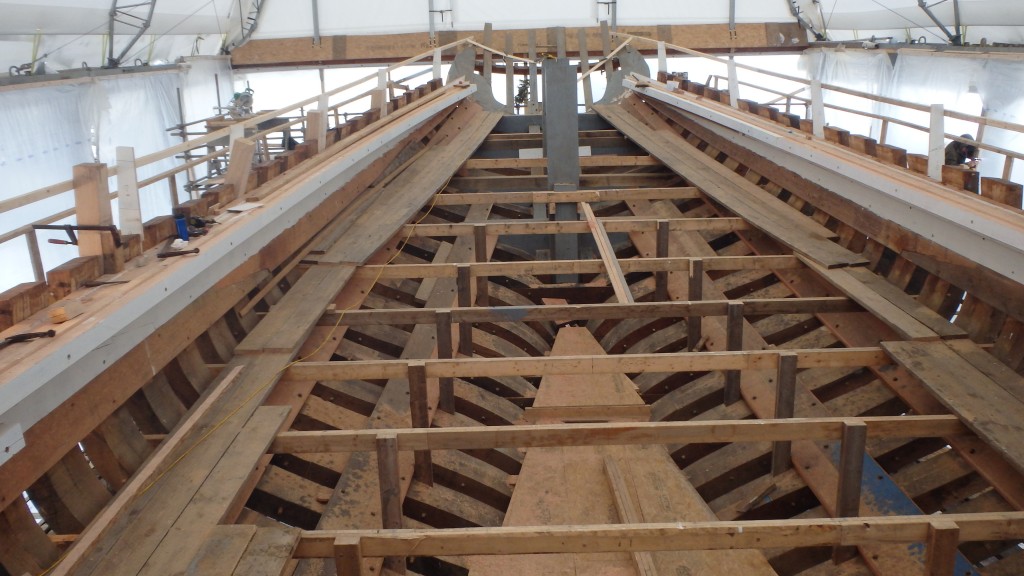
Besides the sheer clamps along the top of the frame you can see the stringers which add stability to the frame. There is a lot of temporary structure here, including the staging, the horizontal supports, and the plywood "sole" over the floor timbers.
A look from midships gives another perspective.
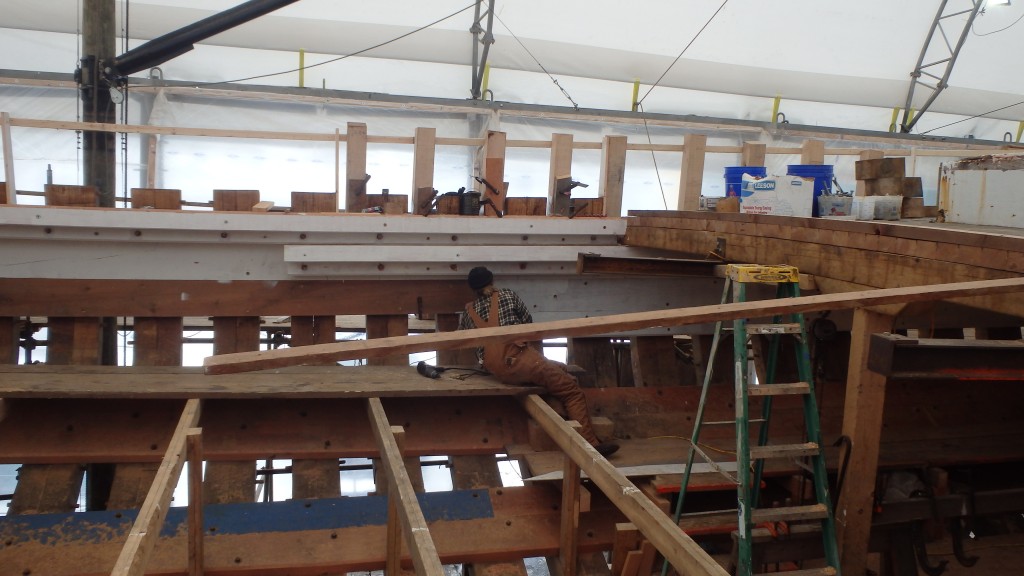
Looking to the port side, the deck beam on the right is at the break in the deck. The top-timbers or stanchions which will support the bulwarks are going in between the frame ends, fastened to the sheer clamp. Again, you can see the stringers. You can also see the bronze bolts which hold the sheer shelf structure together.
Tom is working on the starboard side forward.
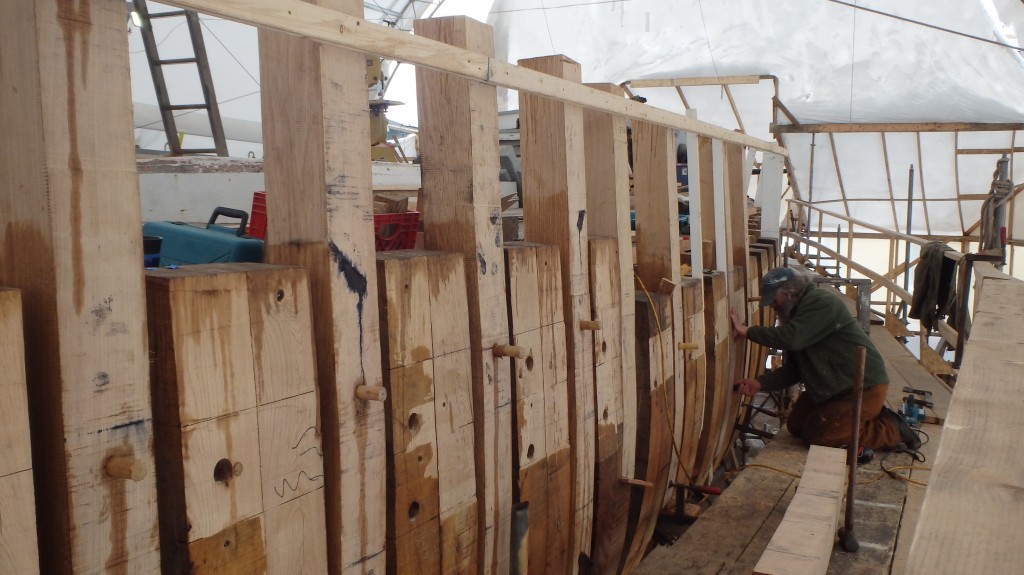
As you can see the stanchions are trunnel fastened. The holes in the frames, which will be bunged, are where the bronze bolts hold the frames to the sheer clamp. The trunnels, now proud. will be chiseled level with the surface of the stanchion.
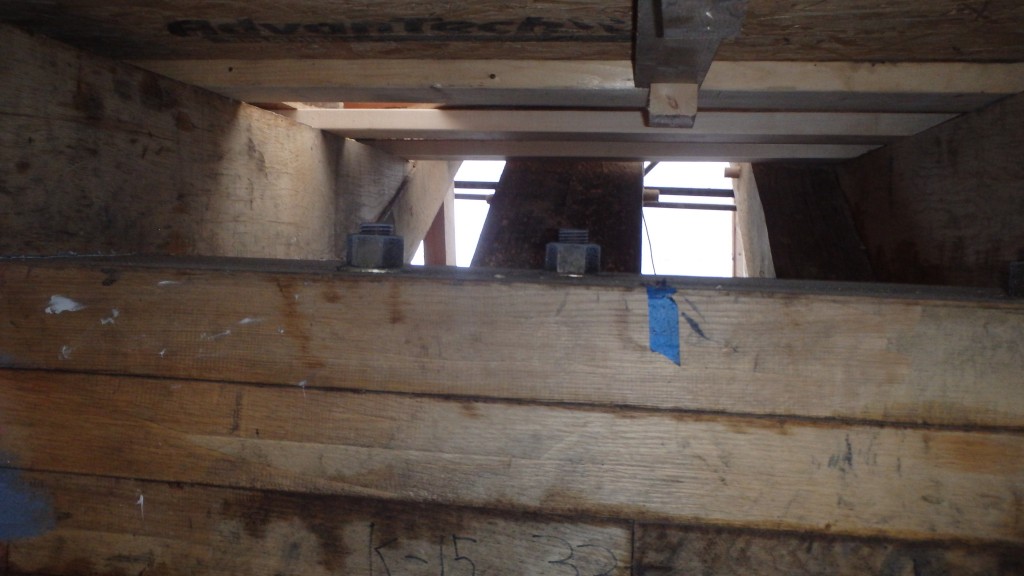
Take a close look at the laminated keelson. The bronze nuts are weathering in the damp, frosty weather. These nuts top the the bronze rod keelbolts, which in this case go from the top of the keelson down through the "hockey stick" ends of the two overlapping futtocks then through the oak keel timber and depending on the position, the lead ballast-keel. On the left and right, on top of the keelson you can see a floor timber topped by temporary plywood. Here the keelbolts go through the floor timbers as well as the rest of the structures. There are two keelbolts for each frame one through each futtock.
Follow this link to This photo from 2016 showing the “hockey stick” ends of the two overlapping futtocks.
Forward, under the foredeck, these large timbers bolted on either side of the keelson are bolsters for the foremast step.
People ask “Is there any old wood left?” The photo below shows the African hardwood stem, installed in Cape Verde, expertly scarfed with new oak by BHS shipwrights. I think it’s beautiful and represents the ongoing evolution of Ernestina-Morrissey, “The Phoenix of the Seas”
And finally, here is her original registration number assigned in 1894 when Ernestina-Morrissey was launched from Essex, Massachusetts to fish for the J.F. Wonson and Co.
Although the vessel was under different registries during her many lives, Julius Britto worked with Representative Gerry Studds to authenticate her Essex Massachusetts heritage and with an Act of Congress the original registration number was restored to the then Ernestina in 1982.
*
You can review all the posts about the Rehabilitation Project HERE.
*
You can join the crew supporting this amazing project. DONATE TODAY!
This entry was posted in Maintenance and Operations Committee, News. Bookmark the permalink.
← 2017: A Year in Review | Tuesday February 13 →




